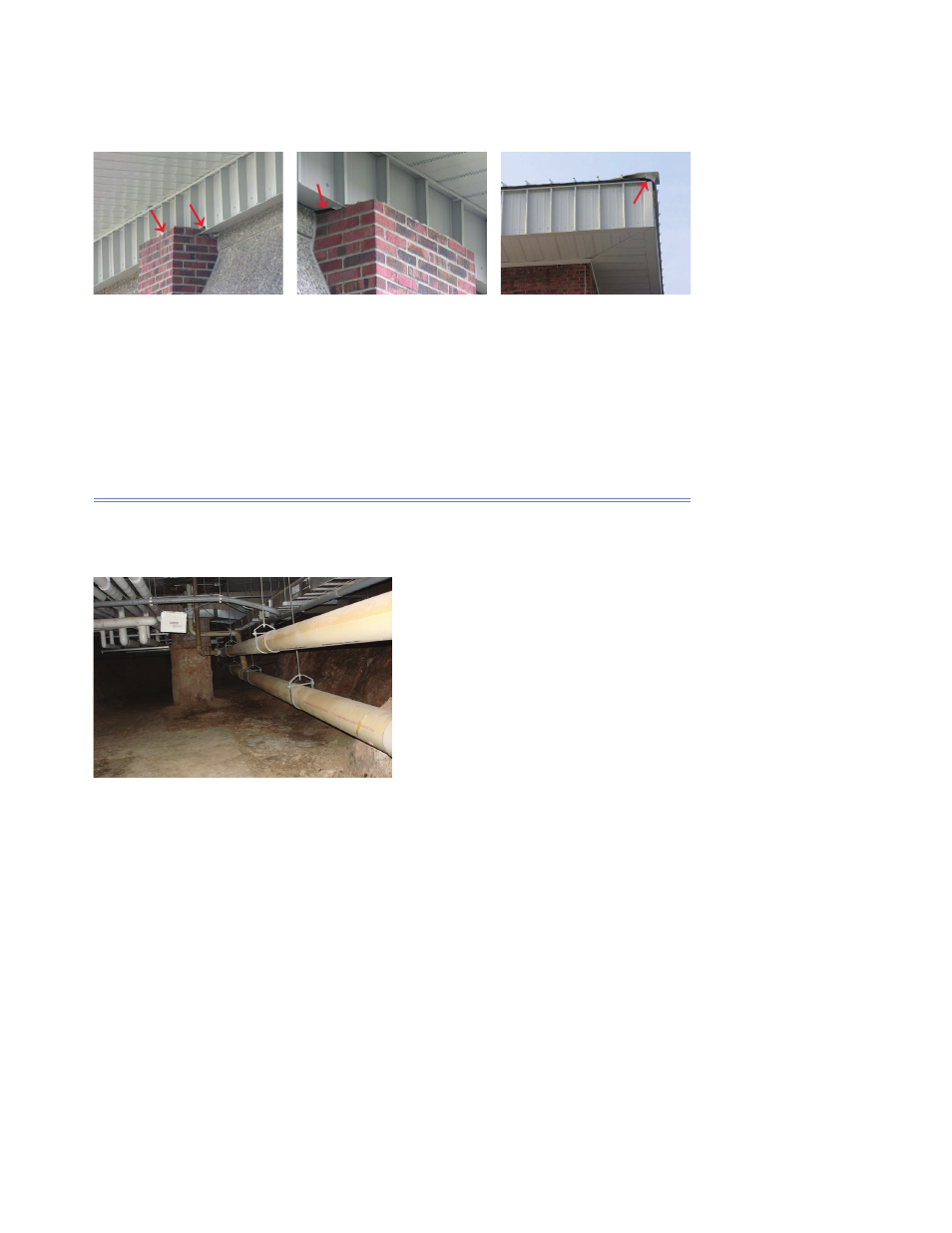Retrotec USACE User Manual
Page 139

Appendix D D9
D.1.2.6 Standing Seam Metal Roofs Have Openings to the
Interior or Attic Space (Waste)
Figure D14. Metal roof openings.
Excessive heat losses from (and gains to) a building’s attic or interior space,
as well as increased air leakage (Figure D14), can result in increased sensible
and latent loads on heating and cooling systems. Appendix E contains further
information on air leakage pathways and their sealing.
D.1.3 Floors
D.1.3.1 Poor Slab over Unheated Basement Insulation (Waste)
Figure D15. Unheated basement.
The two areas of heat loss from a fl oor slab are downward and perimeter loss.
The perimeter consists of that band of earth, concrete, block, or other con-
struction around the edge of the slab that extends below grade to a stable point
in the earth, generally considered to be below the “frost level.” In a basement,
this is the basement wall and footing. The heat loss from an uninsulated base-
ment wall can be three to four times greater than the heat loss from an un-
heated, uninsulated basement fl oor (Figure D15).
With a retrofi t, insulate the basement wall. Whether to insulate outside
or inside the wall is a matter of building design and construction practices.
A thermal break on the bottom side and around the perimeter of the slab to
decouple the slab from the wall is recommended (ASHRAE Fundamentals
Handbook).
